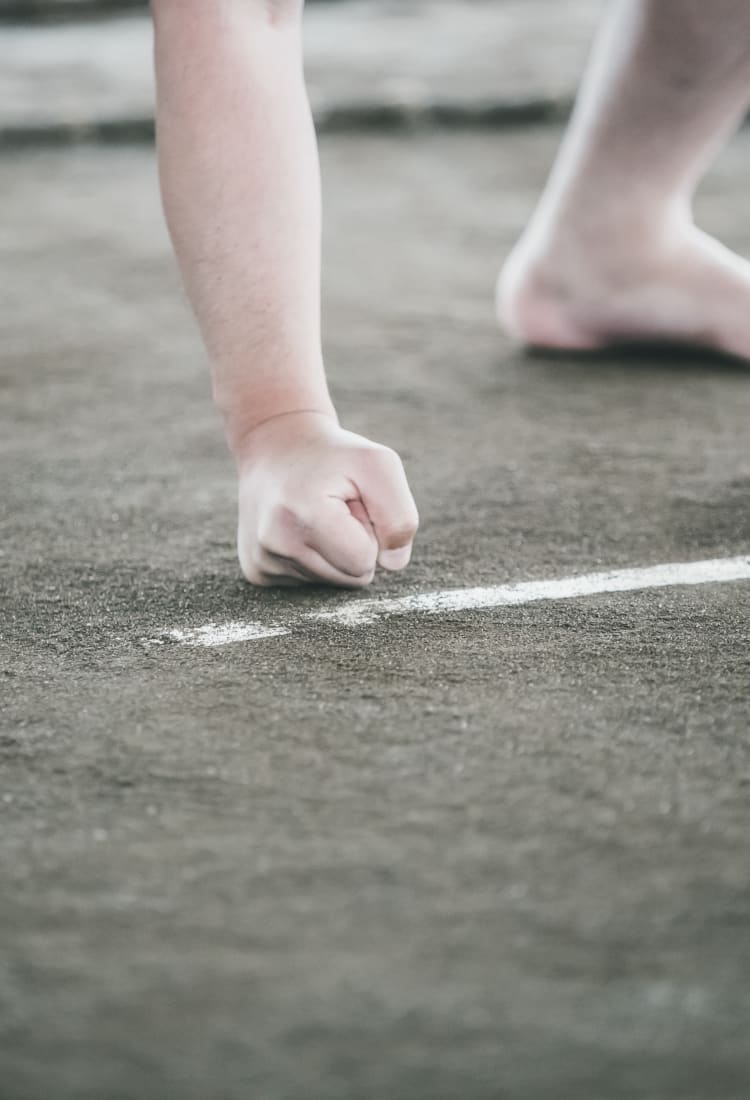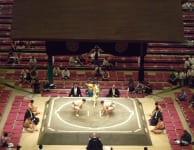Sumo is a national obsession in Japan and a remarkable spectacle for any visitor. It is a sport with a history that stretches back to the mists of time that still remains true to its rituals.
From the traditionally coiffed knots that mark a professional wrestler to his mawashi loincloth, the sacred clay ring, the colorfully attired judges and the rites of throwing purifying salt on the ground before the wrestlers are locked in combat, this sport is like no other.
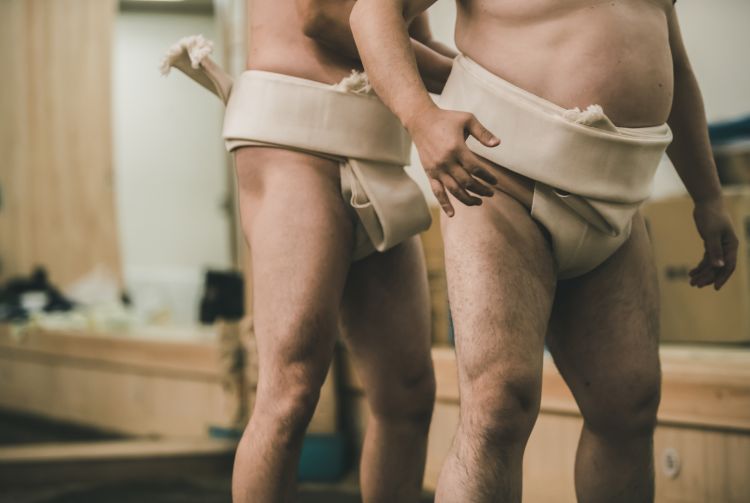
Sumo wrestlers at practice
Roots of sumo
Sumo was originally believed to have emerged as a ritual dance to entertain the Shinto gods at shrine festivals. Early versions of the nascent sport became codified, and the object was for a wrestler to throw his opponent. Rules were established in the Edo period (1603–1867).
It was around this time that sumo became a spectator sport, with bouts typically held at shrines, until the first Ryogoku Sumo Hall, the Ryogoku Kokugikan , opened on the banks of the Sumida River in Tokyo in 1909. In the years after the war, tournaments were shared more equally around the country. Today, there are six tournaments—or basho—held each year, with events in Osaka in March, Nagoya in July and Fukuoka in November alternating with the three tournaments in Tokyo.
Winning a bout
Wrestlers can win a bout by forcing their opponent to step outside the ring or by making them touch the ground with any part of the body other than the soles of their feet. Each bout is preceded by an elaborate ritual that requires the throwing of purifying salt and a series of bows to their opponent before they charge into each other.
Many bouts are over in a matter of seconds as one wrestler puts his opponent off balance at the outset; others have been known to go on for several minutes as the two larger-than-life wrestlers, called rikishi, grapple for advantage.
Professional sumo has six divisions, which are not delineated by weight, meaning that often a contest will be between an extremely large and strong wrestler and a more slender but nimble opponent. Wrestlers move up or down the divisions depending on their results in tournaments.
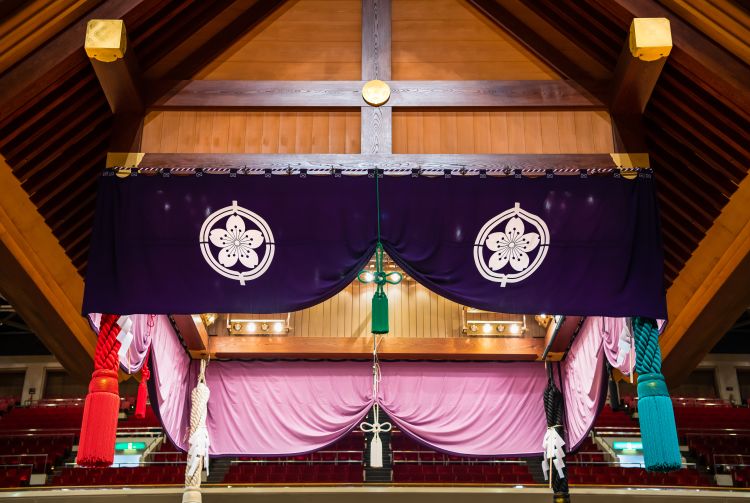
Ryogoku Kokugikan is the main stage for sumo in Japan
Tickets and tournaments
The Japan Sumo Association has an English-language website that provides details of upcoming basho and information on how to purchase tickets. Typically, single arena tickets cost under 4,000 yen, while a box costs around 10,000 yen. Tickets can also be bought at the box office on the day of a tournament, but many days are often sold out, so it is advisable to buy them in advance.
The Tokyo basho
The 11,098-capacity Ryogoku Kokugikan traditionally hosts the New Year tournament, which starts in the middle of January and is often attended by members of the imperial family. The complex includes the small sumo museum that details the history of the sport and some of its more colorful characters through the centuries. Along with the January tournament, Ryogoku Kokugikan also stages the May and September tournaments.
The Osaka basho
The EDION Arena Osaka (Osaka Prefectural Gymnasium) hosts the annual March tournament. The approximately 10,000-seater arena is in Osaka's Namba district, in the center of the city. Expect raucous cheers for any wrestlers from the Kansai region.
The Nagoya basho
In July, the tournament moves to Nagoya and the Dolphin Arena (Aichi Prefectural Gymnasium). The multi-purpose gymnasium holds a capacity of 7,500 and is located on the grounds of Nagoya Castle. As the tournament is held in sweltering July temperatures, the wrestlers competing in the Nagoya basho are always glistening with a sheen of sweat.
The Fukuoka basho
The final tournament of the year is at the Fukuoka Kokusai Center. Fukuoka is a city on Japan's southern island of Kyushu. The tournament is held over two weeks from mid-November, and a good showing at this basho allows wrestlers to jump up the rankings for the new year.
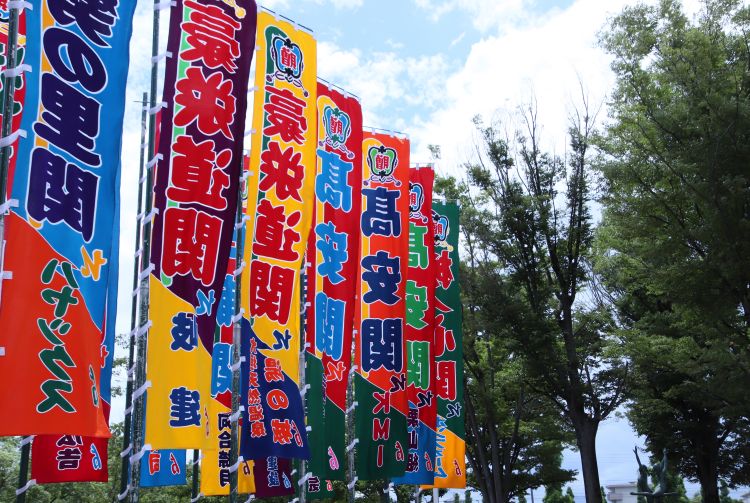
Colorful flags with the names of participating sumo wrestlers
Alternative events
The relatively limited number of tournaments, particularly outside Tokyo, may make it difficult for some people to attend a basho. However, there are other ways to experience this ancient sport. The sumo association operates a tour that crisscrosses the country to show practice bouts, demonstrations, and explanations of moves in the sport and talks by some of the wrestlers. These cover everything from the taiko-uchiwake drumming that is a feature of tournaments, to sumo folk songs, and recreations of the ceremony for entering the sacred ring.
Meiji-jingu Shrine in central Tokyo holds a number of public ceremonies each year involving wrestlers, including a recreation of the ring-entering ceremony. The Isshin Nakizumo ® event is a quirky event in which sumo wrestlers hold babies until one cries and is announced the winner. It is a popular attraction at several shrines and temples across the country, including Sensoji Temple in Asakusa each April.
Many of the wrestlers' stables are clustered close to the Ryogoku Kokugikan in Tokyo. They are often ordinary-looking buildings tucked away in the side streets with a discreet plaque revealing what goes on behind the closed doors. Here, the stable master puts his charges through a rigorous training regime in the morning.
Visiting a sumo stable
While casual, spontaneous visits are not encouraged, some travel agencies can arrange tours for small groups. Typically, visitors will watch the wrestlers practicing their moves and building their physical fitness and strength under the watchful eye of the stable master—usually a retired wrestler—and some of his trusted senior wrestlers.
In the heat of the summer months, the wrestlers drip with sweat. In the depths of winter, their exertions make them steam and the windows fog over.
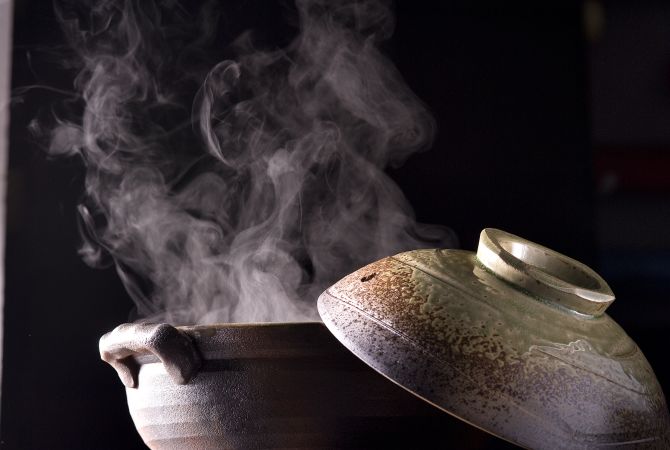

Fill up on chanko nabe
Eat like a sumo wrestler
For anyone who wishes to develop the physique of a sumo wrestler, the place to start would be a restaurant that serves chanko nabe, a concoction of vegetables, meat and seafood that is cooked up in a large pot and consumed in vast quantities by wrestlers, accounting for their girth. There are several specialist chanko nabe restaurants around the Ryogoku Kokugikan and, if in doubt, just follow a hungry wrestler after his morning workout.
Changes in the sport
For all its strictly protected traditions, there have been hints that sumo might be opening up to outside influences. There are numerous foreign wrestlers in the sport today—some of the rikishi in the top division come from Mongolia, Bulgaria and Brazil.
That will not happen by the time Tokyo hosts the games in 2020, it will be featured as a demonstration of Japan's unique sporting traditions.
There have even been suggestions that women—who are at present banned from even setting foot on the dohyo—might be permitted to play a more significant part in the sport, although a change of that magnitude still seems to be a long way off.
All information is correct as of June 2021.
The latest information may differ, so please check the official website




















































